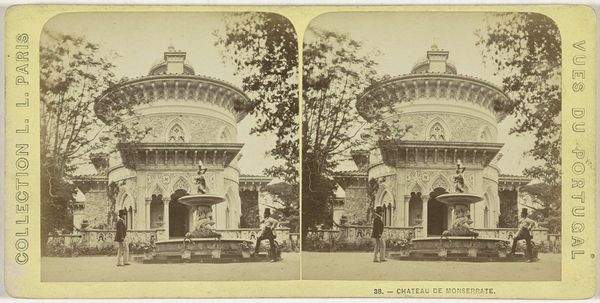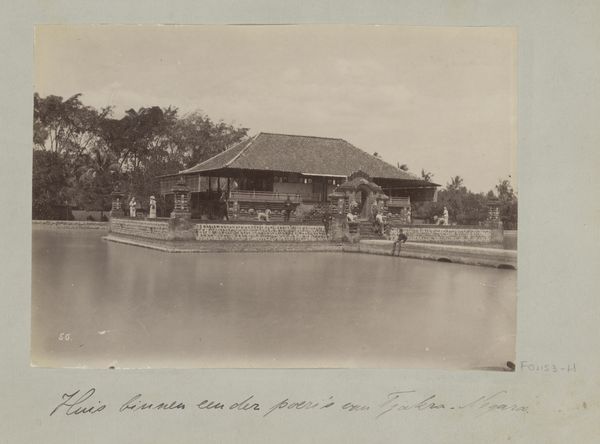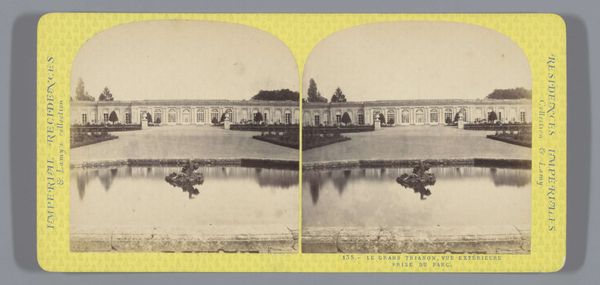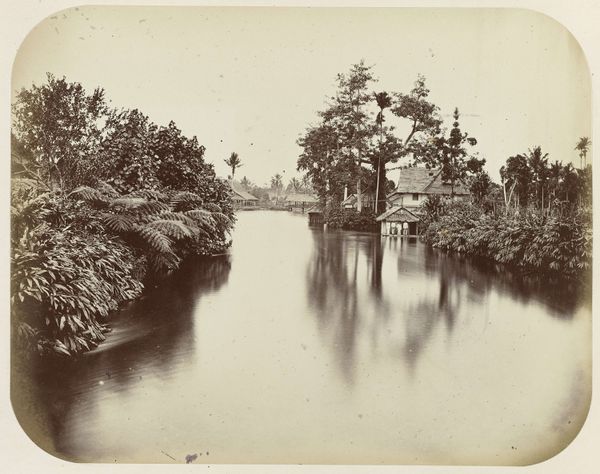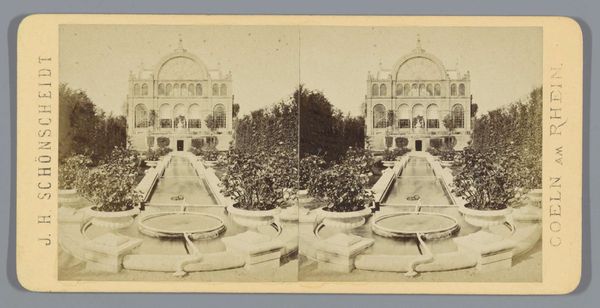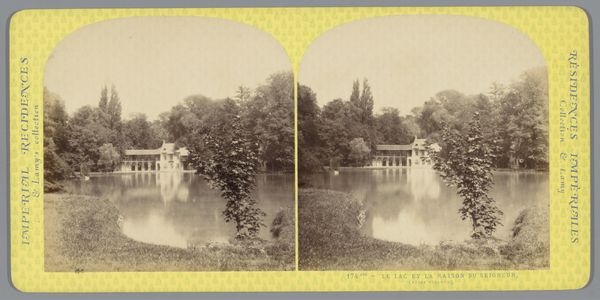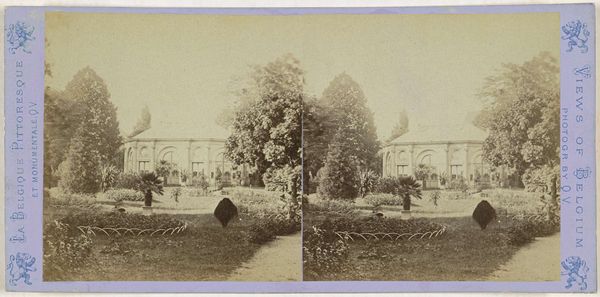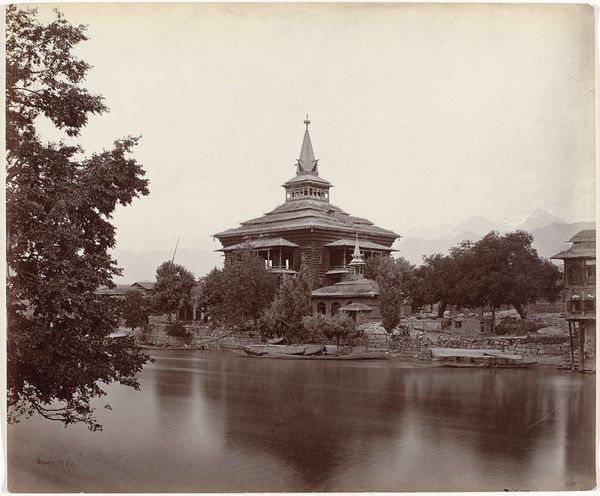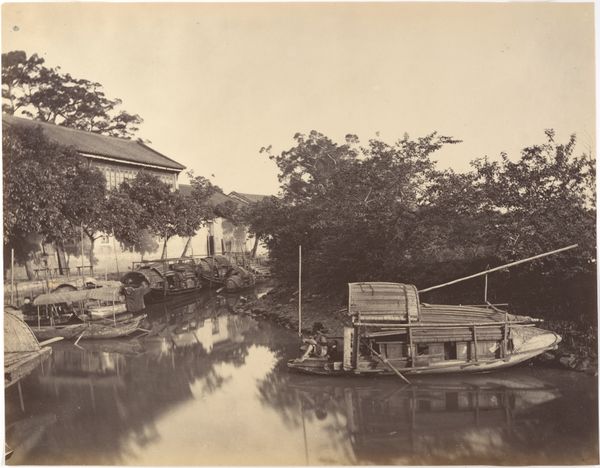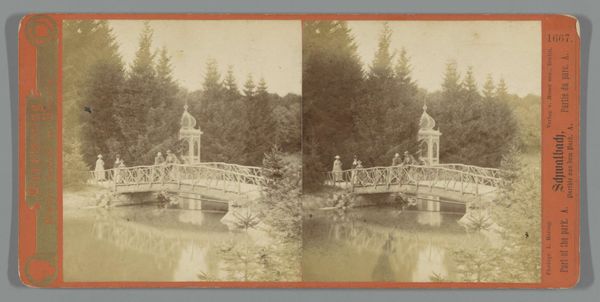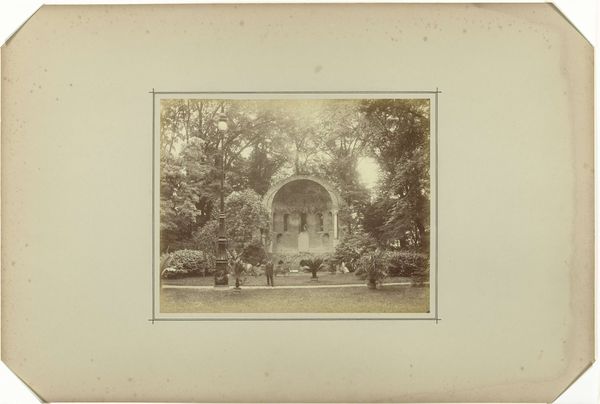
Dimensions: height 86 mm, width 176 mm
Copyright: Rijks Museum: Open Domain
Curator: What strikes me first is the sepia tone; it lends the scene this sense of faded grandeur and makes the still water almost like glass. Editor: We're looking at a work titled "Vijver in de Palmentuin in Frankfurt am Main," or "Pond in the Palm Garden in Frankfurt am Main," by Sophus Williams, taken around 1878. This image is part of a larger series called "Die Rheinlande" or "The Rhineland," produced and published by Sophus Williams in Berlin. The print presents us with an early photographic technique which produced the appearance of a 3D scene, now almost forgotten, as a memory, an aide-mémoire from a time past. Curator: The composition really highlights the stillness. The mirroring of the building and trees in the water gives the scene a symmetry, disrupted by the gentle ripples that offer this textural counterpoint to the scene. The light seems almost diffused, avoiding stark contrasts, so there’s no drama, only the calm reflection of a moment. Editor: That’s a good point about the diffused light. In that era, photography as a medium was heavily influenced by pictorialism. Photographers manipulated their images to resemble paintings. Also, Frankfurt's Palmengarten itself held socio-political implications. Botanical gardens served as sites of both recreation and imperial representation, exhibiting exotic flora from colonized lands and embodying a sense of dominion. It's interesting to consider what it represents in the context of a society with such deep, complex and embedded structures. Curator: Thinking purely about form again, this could be why there is an absence of figures, with only boats docked here. The geometry in its presentation offers a stillness that resonates almost like a carefully structured portrait; perhaps the city is itself the subject? Editor: That’s a possibility; the Palmengarten at this time became an important location for experiencing concerts and events. This created opportunity and visibility to construct new connections and solidarities, beyond the then highly embedded social structure. Sophus Williams seems to subtly gesture at such shifts by focusing on locations where new public experiences could coalesce. Curator: Considering your comments, one thing which strikes me here is this presentation as part of “Die Rheinlande”. It is less of the grand tour aesthetic one often finds of sites such as Venice or Rome at the time; here, though the garden, we may instead encounter this shift toward accessible public spaces. Editor: Absolutely, and through the lens of Sophus Williams, we gain an image reflecting not just the scenery but the transformation of society and access, through both social development and also this interesting development of this medium, the pictorial 3D landscape.
Comments
No comments
Be the first to comment and join the conversation on the ultimate creative platform.
